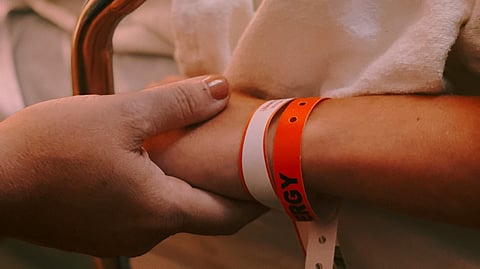

Sammy Basso (28), the longest-living survivor with progeria or Hutchinson-Gilford progeria syndrome (HGPS), passed away. This rare genetic condition causes accelerated aging, resulting in diminished quality of life and a life expectancy of merely 13.5 years without therapeutic intervention.
Data suggests that progeria is an extremely rare genetic condition and its prevalence is extremely low, with an estimated one in 8 million births and 1 in 20 million people affected worldwide.
The Life of Sammy Basso:
Sammy Basso, born in Schio, in the northern region of Veneto, Italy in 1995, was diagnosed with progeria, at the age of 2. Inspired by his diagnosis, his family founded the Italian Progeria Association in 2005. His subsequent journey gained international recognition through the National Geographic documentary "Sammy's Journey," which chronicled his cross-country journey along Route 66 in the United States, accompanied by his parents and close friend Riccardo. This exposure helped raise awareness about progeria.
Sammy's passing leaves an unfillable void. Having met Sammy over 20 years ago, witnessed his unwavering dedication to finding a cure for Progeria.
Audrey Gordon, Executive Director, Progeria Research Foundation, Peabody MA
Audrey Gordon, Progeria Research Foundation's Executive Director, expressed the organization's devastation, saying, "Sammy's passing leaves an unfillable void." Having met Sammy over 20 years ago, Gordon witnessed his unwavering dedication to finding a cure for Progeria. The PRF is mourning the loss of Sammy, a dear friend and inspiration to countless individuals worldwide.
Sammy was a pioneer in PRF's clinical trials and later became a scientist, contributing significantly to the foundation's gene editing team. As a spokesperson for PRF and the Progeria community, he touched hearts globally. His remarkable spirit, optimism, kindness, and brilliance will be deeply missed.
Gordon emphasized, "We will cherish memories of Sammy's extraordinary zest for life and PRF will continue the fight for the cure, honoring Sammy's legacy.”
The association wrote on their Instagram page saying "Today our light, our guidance, went out. Thank you Sammy for making us part of this wonderful life."
Globally, a mere 130 cases of classic progeria have been officially recognized, with Italy accounting for 4. Nevertheless, the Italian Progeria Association suggests the actual number could be significantly higher, potentially reaching 350, due to challenges in tracking cases, especially in developing nations.
Understanding Progeria:
Causes for progeria:
Research reveals that a genetic mutation in the LMNA gene, responsible for producing lamin A protein, causes progeria. This mutation destabilizes cell nuclei, leading to premature cell death and aging. Notably, progeria is not inherited, and there's no biological family history.
Effects of progeria:
Progeria, an extremely rare genetic disease, causes rapid aging in children, despite healthy birth. Children with progeria exhibit premature aging signs, slowed growth, and weight loss as they grow. Despite typical intelligence, distinct physical characteristics emerge, including hair loss, bulging eyes, wrinkled skin, and joint stiffness. Unfortunately, progeria is fatal, often due to atherosclerosis-related complications like heart attacks or strokes says experts.
Treatment Options for progeria:
Currently, doctors say there's no cure, but treatments like lonafarnib improve symptoms and increase average survival rate by 2.5 years. Physical therapy also enhances mobility, balance, and posture while reducing pain. Researchers continue to explore new treatments.
(Input from various sources)
(Rehash/Sai Sindhuja K/MSM)
